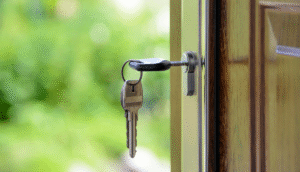
The rental market is big in the news cycle at the moment, with vacancy rates at all-time lows and weekly asking rents soaring as supply fails to keep up with demand.
Whether you are a tenant or landlord, the way you set up your lease is important. One of the first things you need to think of is whether the lease will be periodic or fixed term.
Each will come with its pros and cons, depending on the situation and needs of the individual.
So here’s what you need to know.
What’s the difference?
A periodic lease has no agreed beginning and end date, but simply ‘rolls on’ month by month. A fixed lease, on the other hand, may be for 6 or 12 months, meaning landlords and tenants both have rights and responsibilities for those periods.
Many of the periodic leases in Australia likely began as fixed leases and then rolled over when the agreed period ended. Sometimes landlords and tenants are happy to continue such arrangements for an indefinite period, but in the current market, both are likely to want something more certain and beneficial.
Let’s take a look at some of the pros and cons.
Periodic leases
From a tenant’s perspective, a big bonus is flexibility. Renters can give notice at any time, meaning they can relocate quickly if needed, without being tied to a fixed commitment. For transient workers, or students, or anyone else uncertain about their long term plans, this arrangement can be beneficial.
Landlords can also benefit. When a tenant gives notice to leave, the landlord can plan repairs or improvements without waiting for a lease to expire.
And then there’s the money. For the last couple of years, asking rents have had significant growth. We often hear stories in the media of rents being upped by hundreds of dollars a week in one go.
In many cases, the landlords have had to wait for a year to increase rents. With a periodic lease, they can make rent adjustments to meet the market with an appropriate notice period. This gives landlords agility in achieving market rate.
On the flip side, the main drawback for landlords is a lack of income stability, as their tenants could leave at any time, causing them to spend money on advertising and leasing fees, plus missing the rental income for the property’s vacancy period.
For tenants, the lack of stability is also tough, because new rentals are hard to come by in the current market, so they often face the choice of paying extra rent or being asked to vacate with no place to go.
Fixed term leases
One of the biggest advantages of fixed-term leases for both parties is the stability. Landlords can rest easy knowing there is stable income coming in to help them cover loan repayments and other holding costs. For tenants, they have a home and know they won’t be hit with a sudden rent increase. Financial stability is crucial for anyone wanting to budget and make long-term financial plans.
Landlords also enjoy the security of having a committed tenant for a specified period, minimizing the risk of costly turnovers. The bonus is that the longer the tenant stays in place, the more likely they are to feel a sense of homeliness with the property and look to maintain it with more care. A tenant who keeps a property in good condition is helping the landlord maintain its value.
A lack of flexibility is the main downside for both tenant and landlord. One upside of renting is that you can move more freely between jobs, towns, cities and even countries than if you own a home that you must market and sell in order to go anywhere. A fixed lease can take away that flexibility. If you sign a 12-month lease and soon after getting an offer for a dream job in a new location, for example, you may either must turn down the opportunity or pay costly fees to break your lease.
For a landlord, you can’t raise rents whenever you like, or move family members into your investment property when they need a place to stay at short notice.
Related posts


Is It Better to Rent or Buy a property in 2025?


